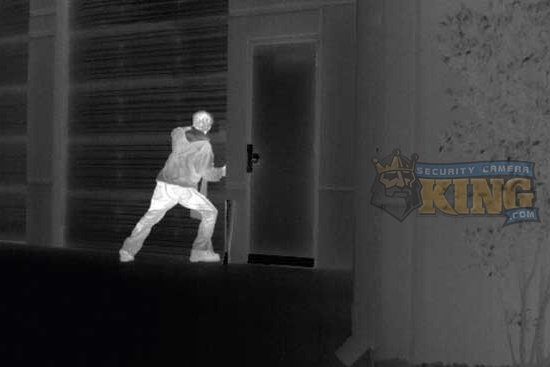The whole point of owning a video surveillance system is to successfully protect people, property, and assets from potential threats. However, without the ability to achieve early detection, security cameras remain reactive instead of proactive and, unfortunately, false alarms are still plaguing most of these devices. A thermal camera security system helps to eliminate these problems with intrusion detection technologies.
Intrusion technologies are now among the most popular advancements in use across most security and surveillance systems. They are useful for providing alerts so that we can deter crimes before happening. The problem is that all too often these same technologies are too sensitive and can get to a point that they become an annoyance.
False alarms are known to overwhelm the very resources authorities use to help combat these scenarios. Law enforcement operations and security guard agencies have to validate each of the threats before reacting, which can be a huge problem when foliage, animals, and weather are constantly being falsely detected as threats.
The best method to alleviate such detection failures is to make the identification process more accurate. Doing so can both validate the credibility of the threat and enhance the overall efficiency for enacting the right type of response. With a timely and effective response in place, the higher the advantage is for diverting the threat successfully.
These factors are of the utmost importance to security and surveillance professionals looking to maximize their capabilities. One of the most prominent ways to achieve higher levels of accurate intrusion detection and identification while minimizing false alarms is with a thermal camera security system. Continue reading to learn more about the advantages of adopting thermal technology in use with video analytics and why this option is continuing to rise among a growing variety of applications.
Limitations of Motion Detection Technologies
Most modern security cameras are adopted along with advanced features that include various surveillance technologies to detect intrusions, such as motion detection, missing object, and more. Though there are advantages to using each of these technologies, it is also well known that they have many limitations regarding their overall accuracy.
During the day, most visible light cameras will suffice in producing useable footage with clearly identifying images. The main problem with conventional night security cameras is their dependence on lighting conditions. Even long-range night cameras have difficulty detecting significant objects clearly in dark settings and during night time.
Visible light security cameras are also known to have problems with visual contrast. It is fairly easy to use camouflage to avoid detection. Additionally, they can have problems with detecting threats in scenarios with pattern similarities or blending colors. Lastly, they have further limitations in separating trees, foliage, animals, and shadows from meaningful objects.
Conventional motion detection sensors by themselves also present similar challenges. Essentially, they can detect intrusions efficiently but provide little chance for verification without active surveillance cameras. A thermal camera security system, on the other hand, accurately detects the threat while allowing the person to verify its validity before enacting the proper response.
Advantages of a Thermal Camera Security System
A thermal camera security system uses video analytics to help identify and classify specific shapes, such as humans or vehicles. Though a thermal camera security system itself might not be as suitable as, say, IR security cameras for creating usable footage with clear details, it does have its valuable uses. The obvious advantage to this ability is it limits the high number of false alarms.
Thermal imaging technology in security cameras permits users to accurately detect threats across greater distances without concern for lighting and environmental challenges. This is because a thermal camera security system does not have the same issues as their visible light camera counterparts or motion detection technologies.
Thermal cameras detect invisible heat radiations instead of visible light. They are capable of seeing heat signatures in people and meaningful objects without any light present whatsoever. By doing so, security personnel is able to accurately identify actual threats and improve their overall effectiveness in deploying the proper response.
Thermal radiation can view through barriers, such as fog or smoke, and detect objects in complete darkness. This high level of accuracy makes implementing a thermal camera security system one of the most effective choices among video surveillance solutions. One example of their effectiveness would be detecting an intruder coming through a dense tree line at night. In this scenario, the heat signature would be clearly identified and easily verified.
Other advantages of thermal cameras are their ability to reduce the number of overall cameras in a surveillance system and cost-saving implementation over time. However, it’s crucial that any thermal camera security system is equipped with the proper video analytics in order for it to be entirely effective. As video analytics continue to see higher advancements, thermal technology is being adapted for more common applications, like perimeter security in gated communities.
Facebook | Twitter | Google+ | YouTube













